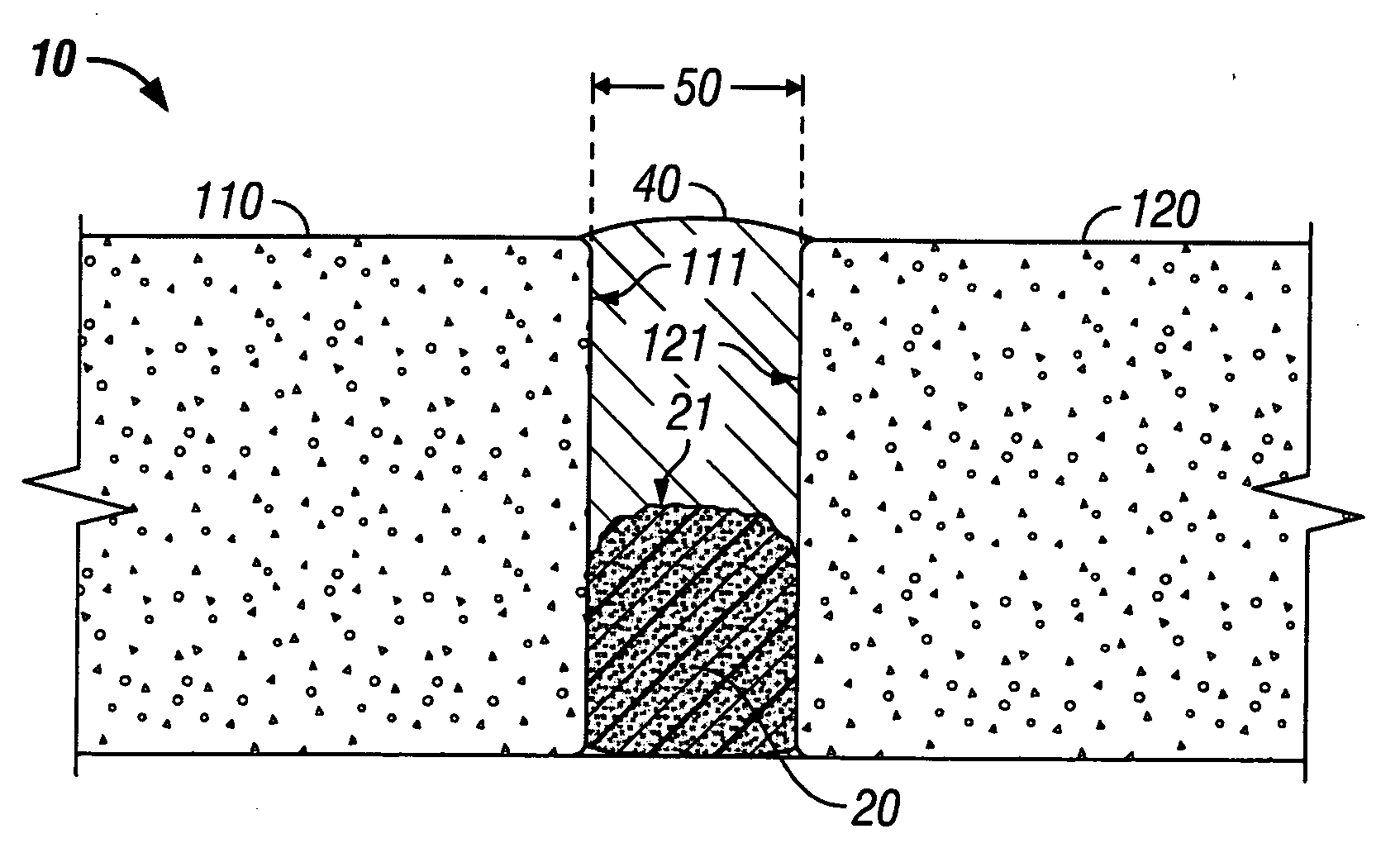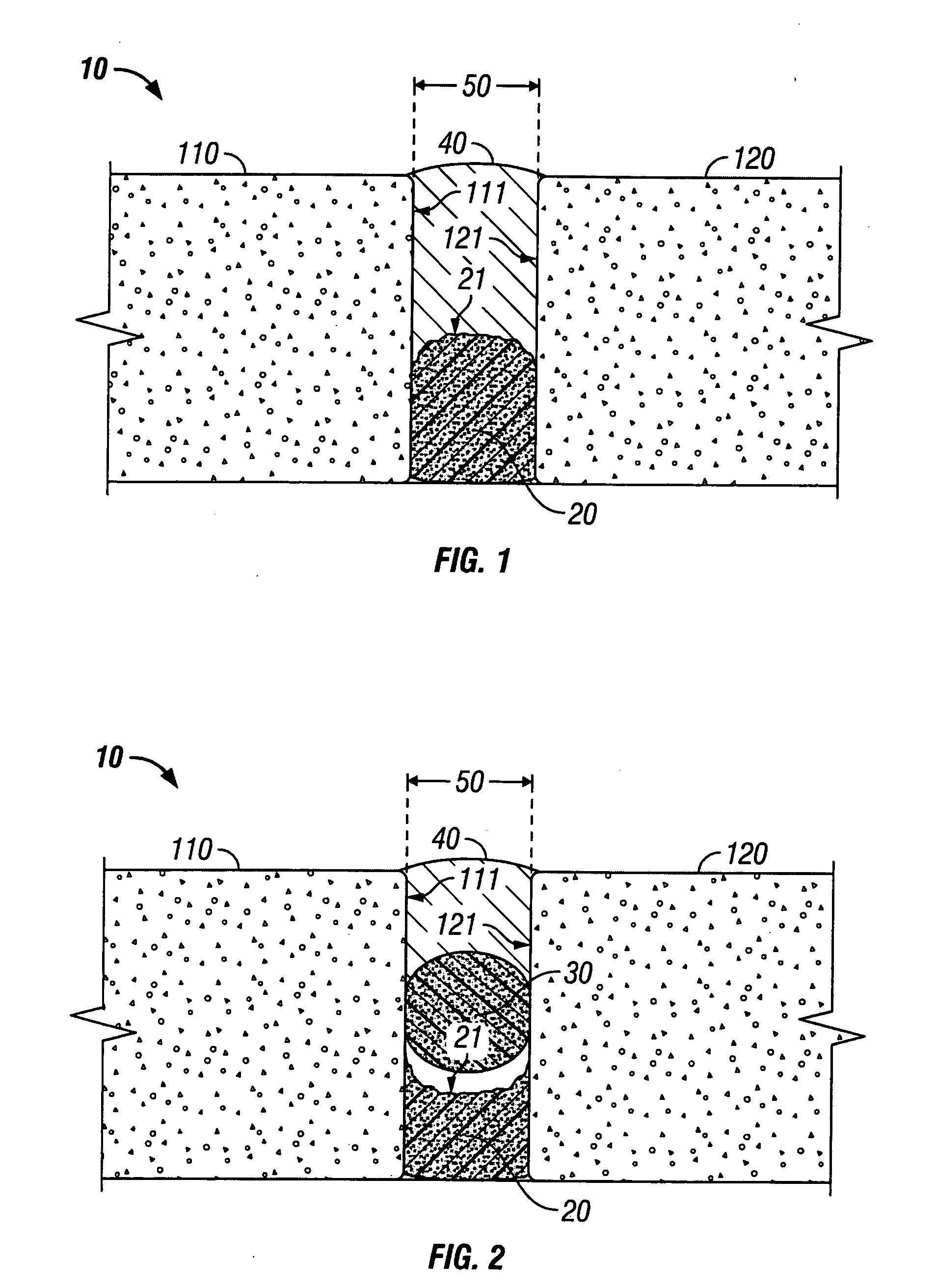Method and device for resilient seal system
a resilient seal and sealing technology, applied in the field of resilient seal systems, can solve the problems of water penetration, method may require additional time, high cost of pre-compressed tapes, etc., and achieve the effect of slowing down the deterioration at joints
- Summary
- Abstract
- Description
- Claims
- Application Information
AI Technical Summary
Benefits of technology
Problems solved by technology
Method used
Image
Examples
Embodiment Construction
[0024] As shown in FIG. 1, the seal system 10 comprises of a foaming sealant 20 and a seal 40 applied between adjacent first panel 110 and second panel 120.
[0025] Foaming sealant 20 is a sprayed-in-place, elastic closed cell hydrophilic / phobic sealant that expands when exposed to air, is impermeable to water and cures rapidly. Because the foaming sealant 20 expands and fills the joint when dispensed, seal 40 may be applied almost immediately thereafter. In one embodiment foaming sealant 20 may be a polyurethane-based sealant. No hand working of foaming sealant 20 by the applicator is necessary once applied. Foaming sealant 20 expands upon contact with air / moisture and is applied in sufficient volume to expand to completely cover the distance between first panel 110 and second panel 120 and to adhere to first panel surface 111 and to second panel surface 121, forming a first resilient seal. Foaming sealant 20 is elastic, therefore not detaching from first panel surface 111 or from s...
PUM
| Property | Measurement | Unit |
|---|---|---|
| length | aaaaa | aaaaa |
| thickness | aaaaa | aaaaa |
| expansive elastic | aaaaa | aaaaa |
Abstract
Description
Claims
Application Information
 Login to View More
Login to View More - R&D
- Intellectual Property
- Life Sciences
- Materials
- Tech Scout
- Unparalleled Data Quality
- Higher Quality Content
- 60% Fewer Hallucinations
Browse by: Latest US Patents, China's latest patents, Technical Efficacy Thesaurus, Application Domain, Technology Topic, Popular Technical Reports.
© 2025 PatSnap. All rights reserved.Legal|Privacy policy|Modern Slavery Act Transparency Statement|Sitemap|About US| Contact US: help@patsnap.com


